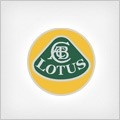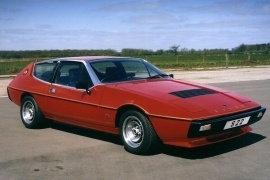
LOTUS Elite
Generations Timeline, Specs and Pictures

The 1973 Lotus Elite was the most expensive car ever produced by Lotus to that date, and the most luxurious.
Lotus tried to move into the luxury sport-car market with the introduction of the Elite model in 1973. It was a joint effort put together by the Lotus team and the ItalDesign Studio led by Giorgetto Giugiaro. The Elite was one of the last cars built by Lotus with direct input from its founder, Collin Chapman, who designed the suspension.
With a shooting-brake shape and a large glass in the back that served as a tailgate, the Elite was a different kind of sports car. It didn’t feature a sloped back but an aerodynamic shape close to a Cx of 0.30. That was an amazing achievement for those times. The fiberglass bodywork was placed on the same backbone platform used on the Elan and Europa models. Another unusual feature was the pop-up headlights system.
While the exterior was signed by Oliver Winterbottom (ex-Jaguar and the Lotus Eclat designer), the interior was designed by Giorgetto Giugiaro. Unlike most other sports cars on the market, the Elite offered four seats with enough headroom for the rear passengers due to the shooting-brake form.
Lotus installed one of its best engines ever under the hood: a naturally aspirated 2.0-liter that produced 155 hp. Later on, that engine was developed for the Esprit and built until 1981. The four-pot unit was paired to a 4-speed manual gearbox, while a 5-speed was on the options list. A 3-speed automatic transmission was introduced in 1976.

Just five years had passed since Lotus entered the car industry and, at the 1957 London Motor Show, unveiled the Type 14 – Elite as a road-legal race-car.
In 1957, most carmakers were still stuck with the body-on-frame construction. Their heavy vehicles needed big engines to move the car at a pace slightly higher than a train. Lotus was already involved in Formula 1 and learned very fast that significant power could get you in trouble, while a light car was most likely to evolve better, even though it was underpowered.
On the outside, the tiny Elite looked like nothing else on the show. Its rounded shapes, round headlights, and a bubble-like greenhouse created a shock for everybody. In 1957 it was challenging to create a profile like the one on the Elite. Its raked and curved windscreen and the arched back left no room for misinterpretation about the car’s number of seats.
Inside, Lotus installed two bucket-seats and a tall transmission tunnel where the carmaker installed the gear stick and a straight-up hand-brake. Its aluminum dash panel featured pull-push buttons, very useful on a race-track but unpleasant for road use. The most important were the tachometer and the speedometer on the five-dial instrument panel, while the other three gauges showed information about fuel level, coolant temperature, and a clock.
Under the hood, Lotus installed a 1.2-liter, inline-four engine. A pair of double-barrel SU carburetors fed it. The light vehicle and its low drag-resistance coefficient of just 0.29 made the car incredibly fast for its small engine.























































